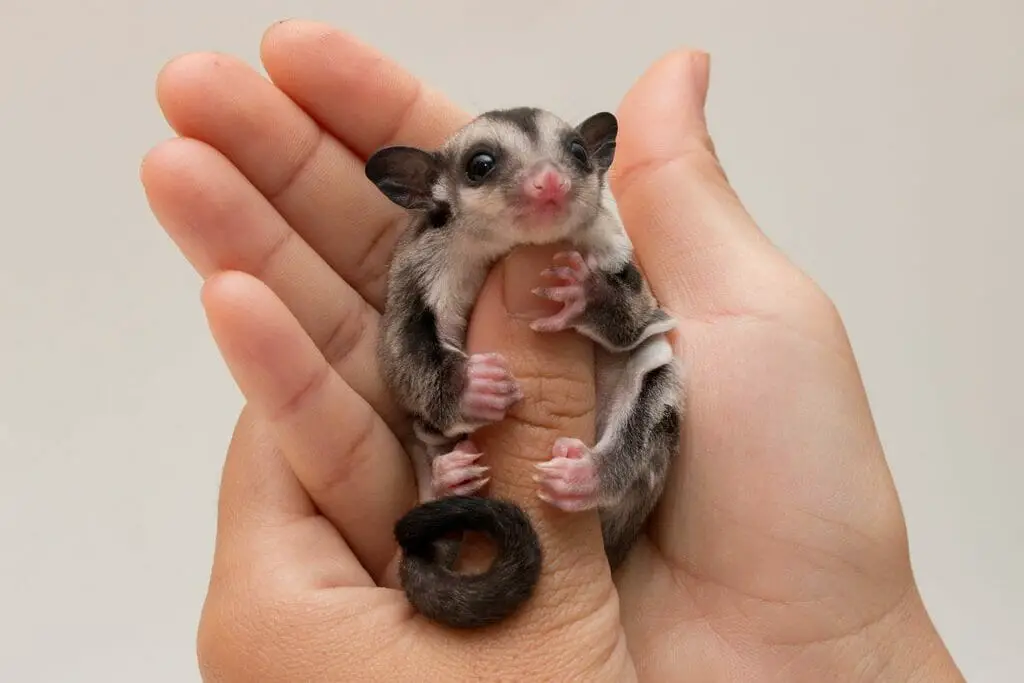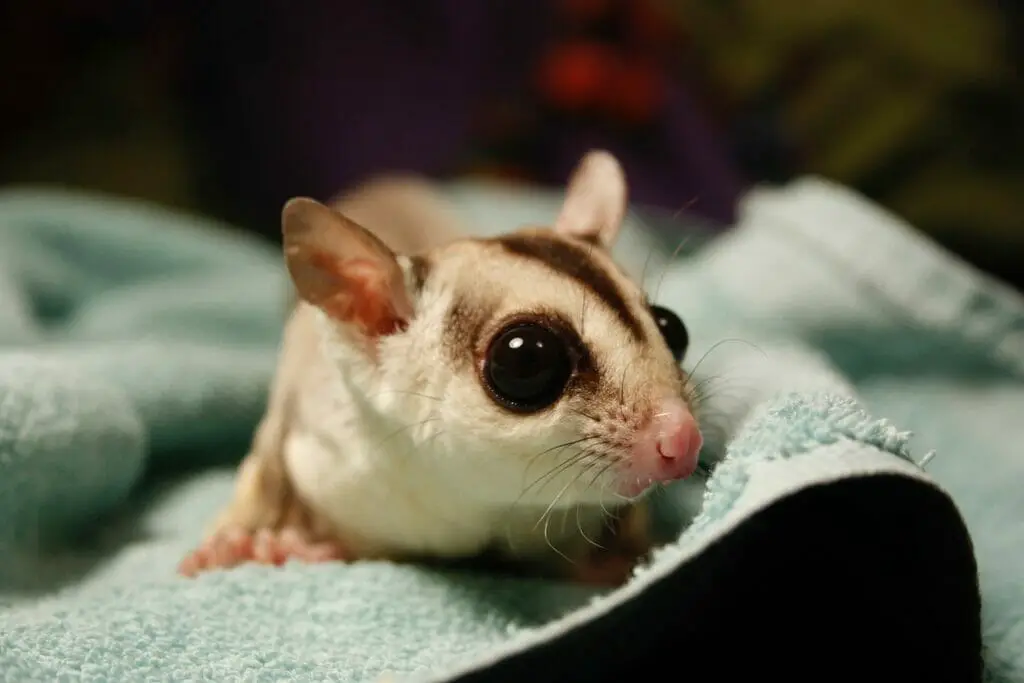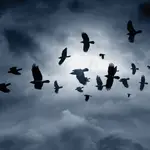Keeping an exotic pet like a sugar glider comes with many challenges, one of which is that most of us are far more accustomed to being around traditional pets like cats and dogs than marsupials.

Because of this, the behavior of your sugar glider can be difficult to interpret. Most pet owners will easily be able to tell whether their dog is happy or not, for example, by the movements of their tail, but with sugar gliders, behavioral signs can be more subtle.
One of the ways you can figure out how your sugar glider is feeling, however, is by learning to interpret the different noises these animals make.
you learn the meaning behind your sugar glider’s noises, you may be able to tell whether they are content, bored, excited, scared, angry, or even in pain.
Here are the main sounds you are likely to hear your sugar glider making, and what they mean. Bear in mind that a single sound from a sugar glider could have a few different meanings, so context is key when interpreting sugar glider’s noises.
The Most Common Sugar Glider Sounds And Meanings

Purring
Purring is a sound generally interpreted as contentment in felines, and luckily, this noise is easy to interpret in sugar gliders because it means the same thing.
If you hear your sugar glider making a purring noise, which may also sound like a rapid heart beat (imagine a very small drum beating), you can assume that they are feeling contented and happy.
Bear in mind that because sugar gliders are so small, the purring noise they make is very quiet. If you think you’re hearing purring, but it’s fairly loud, you may actually be hearing one of the other noises we’re going to discuss, so stay tuned for more.
Hissing
This is another animal noise that many pet owners will be familiar with. If you’ve ever owned or been around cats, you’ll recognize this noise straight away – and you might already know what it means.
When your sugar gliding is hissing, there’s no mistaking the sound because it sounds very much like a snake’s hiss. It will also be insistent and repetitive.
As a new sugar glider owner, hearing your pet hiss can be alarming. Because of the association between hissing and fear or aggression when it comes to cats, you might automatically assume that your sugar glider is unhappy if you hear this sound.
Now, it’s true that a sugar glider’s hissing can indicate fear, agitation, or pain. You definitely shouldn’t discount these possible causes, and when you hear a hiss, you should be on the lookout for body language to confirm your suspicions.
For instance, if your sugar glider is sitting in a hunched position with their tail sticking straight up, they are likely experiencing digestive issues that could be causing pain or distress.
Sugar gliders are sensitive to stress, so it’s also possible that your pet is hissing out of annoyance or anxiety. These marsupials are nocturnal, so if you’ve accidentally disturbed your glider’s sleep during the daytime or if there are loud noises or sudden movements happening, stress could be the cause of the hissing.
With that being said, sugar gliders have also been known to make hissing sounds while grooming themselves. This is because they need to spit into their hands to groom themselves, which makes a hissing noise (also described as sneeze-like).
Something else to consider is that a real sneeze from a sugar glider can easily be confused for a hiss. Watch out for sneezing in the winter, when sugar gliders are prone to respiratory infections.
Chirping And Chattering
Onto a more positive sound, if you hear a sound similar to teeth chattering, often interspersed with low squeaking noises, that’s your sugar glider chattering (also known as chirping).
While this noise might sound strange if you haven’t heard it before, it’s nothing to worry about. In fact, sugar gliders make this chirping or chattering sound when they’re experiencing positive emotions, so it’s normally a sound of contentment.
They will often make this noise when enjoying a snack they particularly like, so if you have given your sugar glider a treat and they start chattering, consider that their seal of approval!
Crying
A sugar glider’s crying doesn’t sound like a human crying (sobbing) so owners can sometimes miss this sign that something is wrong. However, like dogs, sugar gliders cry by making a whining noise.
Unfortunately, there’s really no positive interpretation to this sound. Sugar gliders will most frequently make the crying noise when they are first separated from their families and introduced to a new environment.
If your sugar glider is crying, you should do everything you can to keep your new friend comfortable and make them feel safe and secure in their environment.
Singing
Singing is a noise you might not hear your sugar glider making at all if you have a male sugar glider or a female separated from her joey.
That’s because the sugar glider singing noise is pretty much exclusive to female sugar gliders seeking to comfort or express contentment to their joeys.
You’ll know if your sugar glider is singing because it’s a pretty distinctive sound, identifiable by varying pitches that actually sound lyrical, like a song.
Crabbing
If your sugar glider is making a screeching, gurgling noise that increases and then decreases in pitch (think the sound a locust makes), that’s called crabbing.
This is not a noise you’ll be able to ignore, even if you’re in a different room, because it’s so loud and repetitive.
While this is actually the most well-known sugar glider noise, it’s also not a good sign. If you hear your pet crabbing, you can be sure that they’re upset and you should monitor them for signs that something is wrong.
Crabbing is a noise that often indicates agitation and fear, usually warning of nearby (real or perceived) danger. However, sometimes, sugar gliders will make this noise because they’re simply desperate for attention.
Remember, sugar gliders are not naturally solitary creatures. They can easily feel lonely and crave the company of other members of their species since they’re such social creatures.
Barking
The final sugar glider sound we’re going to talk about in today’s article is barking. This noise is very similar to the kind of barking you’d expect from a small dog like a chihuahua (high-pitched yipping).
There are many potential reasons for this noise. Sometimes, it can seem like sugar gliders let out barks for absolutely no reason. They may also do it because they’re excited, bored, irritated, or trying to communicate with their owners.
Final Thoughts
Sugar gliders might only be very small marsupials, but they can certainly let out some impressive noises for such tiny creatures!
The sugar glider is a very vocally communicative animal and will make its feelings known through a variety of sounds.
While purring, chattering, and singing usually indicate contentment or affection, hissing, crying and crabbing are sounds of displeasure or discomfort.
Barking can indicate a variety of emotions, ranging from excitement to annoyance, so you’ll need to look at body language and your pet’s surroundings to pinpoint the cause of your sugar glider’s yipping noises.









